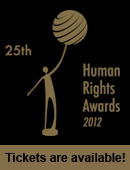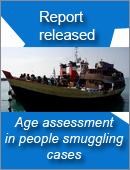Same-Sex: Same Entitlements: Chapter 1
Chapter 1. Introduction
Download Chapter 1: [ PDF] [Word]
- 1.1 Is there really discrimination against same-sex couples and their children?
- 1.2 How many people does the discrimination affect?
- 1.3 How do same-sex couples feel about discrimination in the area of financial entitlements?
- 1.4 How easy is it to fix the discrimination?
- 1.5 Do you need same-sex marriage to remove discrimination in financial and work-related entitlements?
- 1.6 What is the structure of this report?
All persons are equal before the law and are entitled without any discrimination to the equal protection of the law. In this respect, the law shall prohibit any discrimination and guarantee to all persons equal and effective protection against discrimination on any ground...
International Covenant on Civil and Political Rights, article 26
In all actions concerning children, whether undertaken by public or private social welfare institutions, courts of law, administrative authorities or legislative bodies, the best interests of the child shall be a primary consideration.
Convention on the Rights of the Child, article 3(1)
1.1 Is there really discrimination against same-sex couples and their children?
The right to non-discrimination, equality before the law and the protection of the best interests of the child are among the most fundamental of all human rights principles. Yet there are a raft of laws on Australia’s books which deny basic financial and work-related entitlements to gay and lesbian couples and their children.
Appendix 1 to this report sets out a long list of federal laws which clearly discriminate against same-sex couples in the most ordinary areas of every day life. All these laws breach the International Covenant on Civil and Political Rights (ICCPR) and some of them breach the Convention on the Rights of the Child (CRC).
Same-sex couples and families get fewer leave entitlements, less workers’ compensation, fewer tax concessions, fewer veterans’ entitlements, fewer health care subsidies, less superannuation and pay more for residential aged care than opposite-sex couples in the same circumstances.
Same-sex couples are denied these basic financial and work-related entitlements because they are excluded from the definitions describing a couple in all the federal laws in Appendix 1. Federal law after federal law defines a ‘partner’ or a ‘member of a couple’ or a ‘spouse’ or a ‘de facto spouse’ as a person of the opposite sex.
Further, children in same-sex families may suffer because one or both of their parents are denied the financial and work-related entitlements which are intended to help families live better.
1.2 How many people does the discrimination affect?
The 2001 Australian census suggests that there are approximately 20 000 same-sex couples living together in the same home.[1] Of those 20 000 couples, approximately 20% of lesbian couples, and 5% of gay male couples are living with children.[2]
However, the Australian Bureau of Statistics suggests that the figure of 20,000 underestimates the true number of same-sex couples.[3] And several surveys suggest that there are many more gay male couples with children than the 5% suggested in the census – some suggest the figure is closer to 10%.[4]
Whatever the precise figures, it is quite clear that discrimination against same-sex couples and their children affects many people in the Australian community.
1.3 How do same-sex couples feel about discrimination in the area of financial entitlements?
The Inquiry spent more than three months travelling around Australia holding public hearings and community forums to hear, first hand, about the impact of discriminatory laws on gay and lesbian couples.
Those public consultations, and some of the 680 written submissions received by the Inquiry, clearly describe the financial and emotional strain placed on gay and lesbian couples who are trying to live their lives like everybody else in the community.
One Victorian expressed his frustration as follows:
The inequalities embedded in current legislation are obvious and are inexcusable. ‘Understanding, tolerance and inclusion’ are said to be values of the Australian community. Current legislation tells another story.[5]
A lesbian couple from Adelaide said the following:
We are an average suburban family. We are working hard and contributing to our community. We don’t want special treatment - just what others can expect from their legal and social community. Our rights are denied simply because of who we love. We just want equality.[6]
A lesbian parent in Sydney made a similar plea:
I am not a second class citizen and [I] resent my family and I being treated as such. All I ask is to be treated equally, no more and no less than any other Australian. Just equal.[7]
A gay doctor put it like this:
I am a first-class taxpayer but a second-class citizen.[8]
1.4 How easy is it to fix the discrimination?
It is simple to remove discrimination against same-sex couples in the area of financial and work-related entitlements: change the definitions in the laws listed in Appendix 1.
There is no need to rewrite federal tax legislation, superannuation legislation, workers’ compensation legislation, employment legislation or any other major area of federal financial entitlements.
There just needs to be some minor changes to a few definitions at the front of each relevant piece of legislation.
The definitions describing a de facto couple should include opposite-sex and same-sex couples alike. And the terms describing the relationship between a child and his or her parents should include same-sex and opposite-sex parents alike.
Chapter 18 on Findings and Recommendations and Appendix 1 to this report provide further guidance on how this can be done.
1.5 Do you need same-sex marriage to remove discrimination in financial and work-related entitlements?
Many submissions to the Inquiry discuss the importance of formal recognition of same-sex relationships through registration schemes, civil unions or marriage. Other submissions to the Inquiry express opposition to same-sex marriage.
The Inquiry understands that for some people in same-sex relationships, formal recognition is not only a path to legal rights and equality, but an important symbolic expression of love between two people.
However, the focus of this Inquiry has been to make sure that all couples in Australia have the same access to basic entitlements like tax concessions, superannuation death benefits, carer’s leave, workers’ compensation, veterans’ entitlements and aged care.
An opposite-sex couple does not have to marry to get those entitlements; nor should a same-sex couple have to marry.
So, while same-sex marriage or civil unions could assist those couples who choose to formalise their relationship in that way, this Inquiry has focussed on ensuring that all couples have all the same rights whether or not they are married.
1.6 What is the structure of this report?
This report starts by setting out the Inquiry’s methodology in Chapter 2 and the human rights of people in same-sex couples, and their children, in Chapter 3.
Chapter 4 on Recognising Relationships summarises how federal laws regarding financial and work-related entitlements define a person in a couple. It describes how state and territories have reformed their laws to remove discrimination. It then briefly discusses the potential impact of formal relationship recognition schemes in the area of financial entitlements. Finally, Chapter 4 proposes a new definition of ‘de facto relationship’ for all federal laws, which would remove discrimination against same-sex couples.
Chapter 5 on Recognising Children explains how family law defines a parent-child relationship when a child is born to a same-sex couple. It explains how those legal relationships impact on who is a ‘child’ in laws regarding financial and work-related entitlements. It then sets out what should change to remove the discrimination.
Chapters 6 – 15 describe the impact of discriminatory definitions in the following areas of financial and work-related entitlements:
Chapter 6 Employment
Chapter 7 Workers’ Compensation
Chapter 8 Tax
Chapter 9 Social Security
Chapter 10 Veterans’ Entitlements
Chapter 11 Health Care
Chapter 12 Family Law
Chapter 13 Superannuation
Chapter 14 Aged Care
Chapter 15 Migration
The table of contents to each chapter summarises which entitlements are, or are not, available to a same-sex couple or family. Each chapter also has a list of legislation at the end which sets out the definitions that need to change to remove the discrimination identified throughout the chapter.
Chapter 16 sets out a miscellaneous list of additional legislation which may discriminate against same-sex couples and families.
Chapter 17 briefly discusses general homophobia in the community and discrimination on the basis of gender identity. Those issues did not fall directly within the Inquiry’s Terms of Reference, but they were of substantial concern to several people making submissions and speaking at community forums.
Chapter 18 summarises the Inquiry’s findings and recommendations.
Appendix 1 sets out a comprehensive list of legislation which must be amended to remove discrimination against same-sex couples and their children in federal law. This is an accumulation of the lists at the end of each of Chapters 6–16.
Appendix 2 sets out a small selection of stories describing the impact of discrimination on same-sex couples and families.
Appendices 3–5 provide details on who made submissions, the Inquiry’s public hearings and the Inquiry’s community forums.
Endnotes
[1] Australian Bureau of Statistics, Year Book Australia, ‘Same-Sex Couple Families’, p142 (2005).
[2] Australian Bureau of Statistics, Year Book Australia, ‘Same-Sex Couple Families’, p142 (2005).



